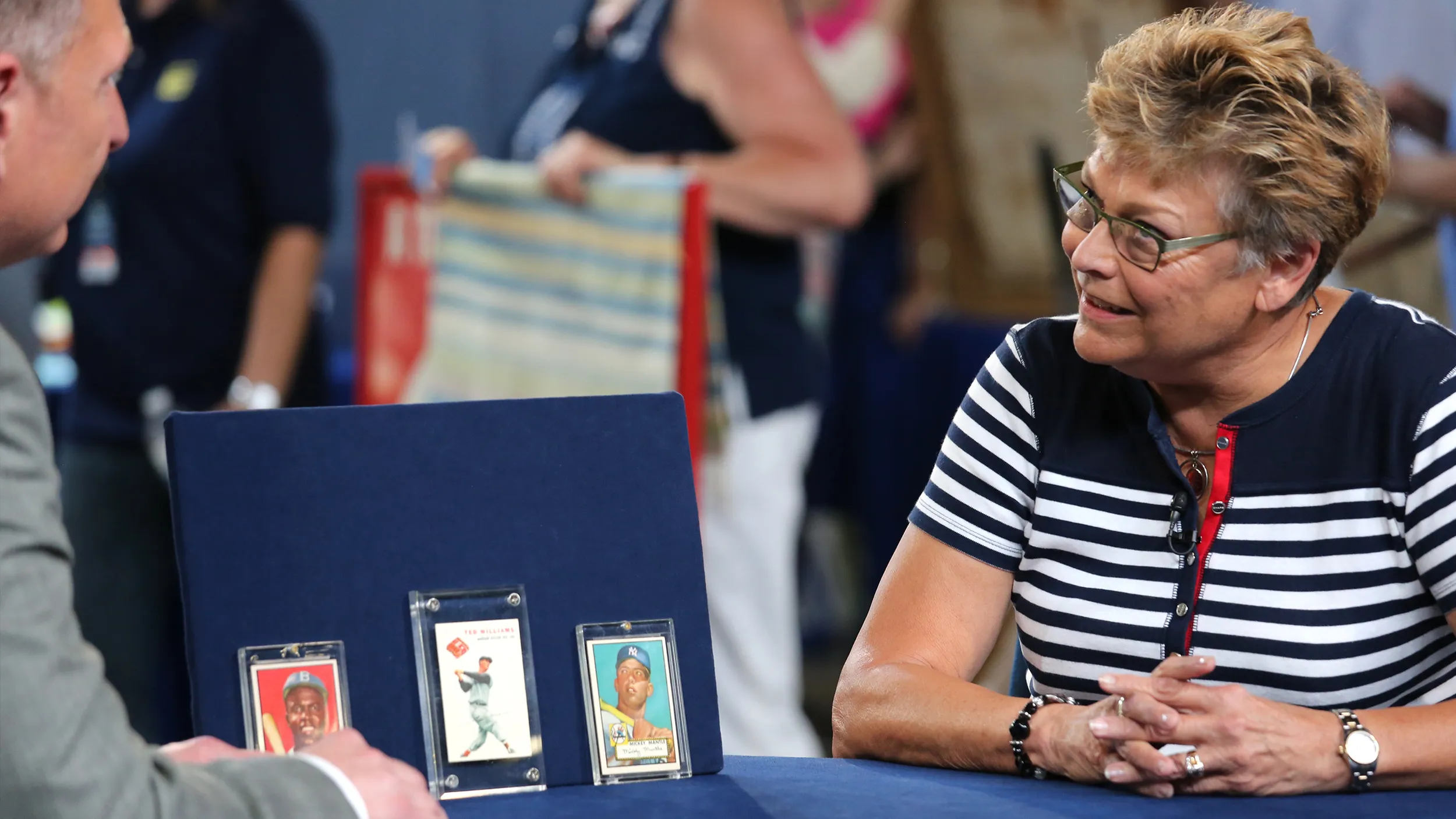GUEST: This used to hang in my parents' home in Milwaukee on the East Side. When my parents bought the house in 1965, it was there at the time. It hung in the house for the 40 years that my parents lived in it.
APPRAISER: When was it taken down?
GUEST: It was taken down probably 15 to 18 years ago, because some of the links gave way.
APPRAISER: That's probably because it's a little old.
GUEST: And it's heavy.
APPRAISER: Yes. At some point, that probably can be addressed. This is a very early Tiffany piece.
GUEST: (gasps) Oh, my gosh!
APPRAISER: It actually dates from about 1892. And it's before Louis Comfort Tiffany's company became Tiffany Studios, which is what everybody says. But in the 1890s, the name of the company was Tiffany Glass and Decorating Company.
GUEST: Okay.
APPRAISER: He had taken a lease on a glassmaking company. He was using their facilities in Brooklyn from about 1881 to about 1892. The name of that company was Heidt, H-E-I-D-T. And that's where, on all likelihood, these beautiful opalescent glass pieces were made, as well as the piece that sits in the middle of the fixture.
GUEST: Okay.
APPRAISER: Now, something like this wouldn't be signed, but I saw it and it had his name all over it. Because this is how Tiffany would do a lot of his interior decoration projects in that period of time would look something like this, where you would have this exotically twisted metal made to look like rope, and covered in a silver finish, usually with opalescent glass. These are little opalescent protruding tiles, which sometimes you will see in the early mosaics of the period. You'll see them in the Tiffany windows of the period, but also in fixtures like this. The style had a Moorish influence. Tiffany was fascinated with Orientalism and Moorish design. And it's reflected in much of his interior decoration.
GUEST: Wow.
APPRAISER: What was really exciting to see was that you had all the metal parts. You never find the canopy that goes, fits into the ceiling, or the pole here that... At the very bottom, there's one socket for one light bulb.
GUEST: Right.
APPRAISER: This is an early lighting fixture, too.
GUEST: It is.
APPRAISER: Because even at this time, he was making gas fixtures.
GUEST: Okay.
APPRAISER: And sometimes they made fixtures that were piped for gas and electricity at the same time, because they didn't trust the electricity. This period of his work is obscure. You don't see a lot of it-- most of it doesn't survive.
GUEST: Wow, my heart is pounding. (chuckles)
APPRAISER: Something like this, because you have all its parts, and even because... I know you had said there are two pieces that came apart, even with that-- it's something that could be easily fixed, and this could be wired, again, for electricity-- this would sell in a retail shop for between $15,000 and $20,000.
GUEST: Wow. Wow. (chuckling) Wow! I am so amazed. Whew!



